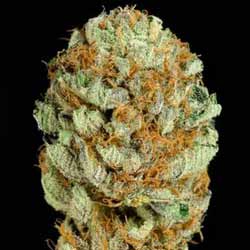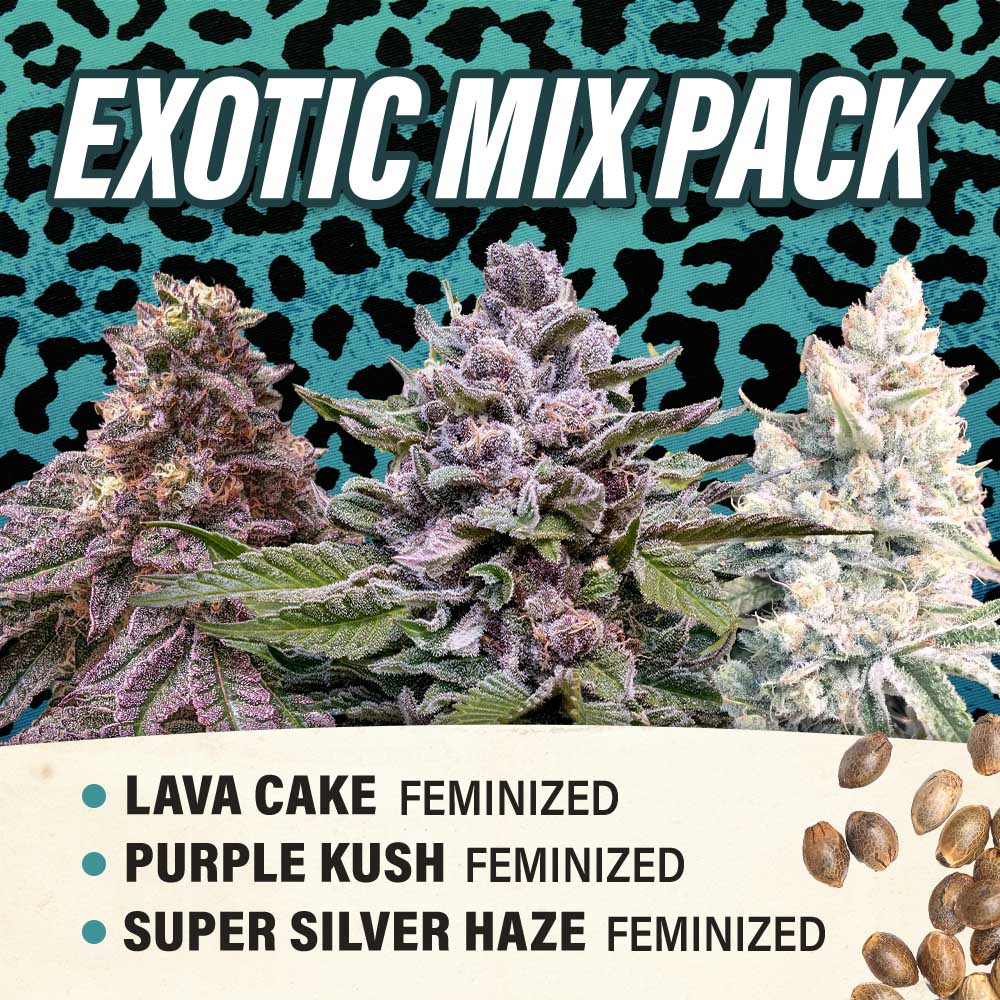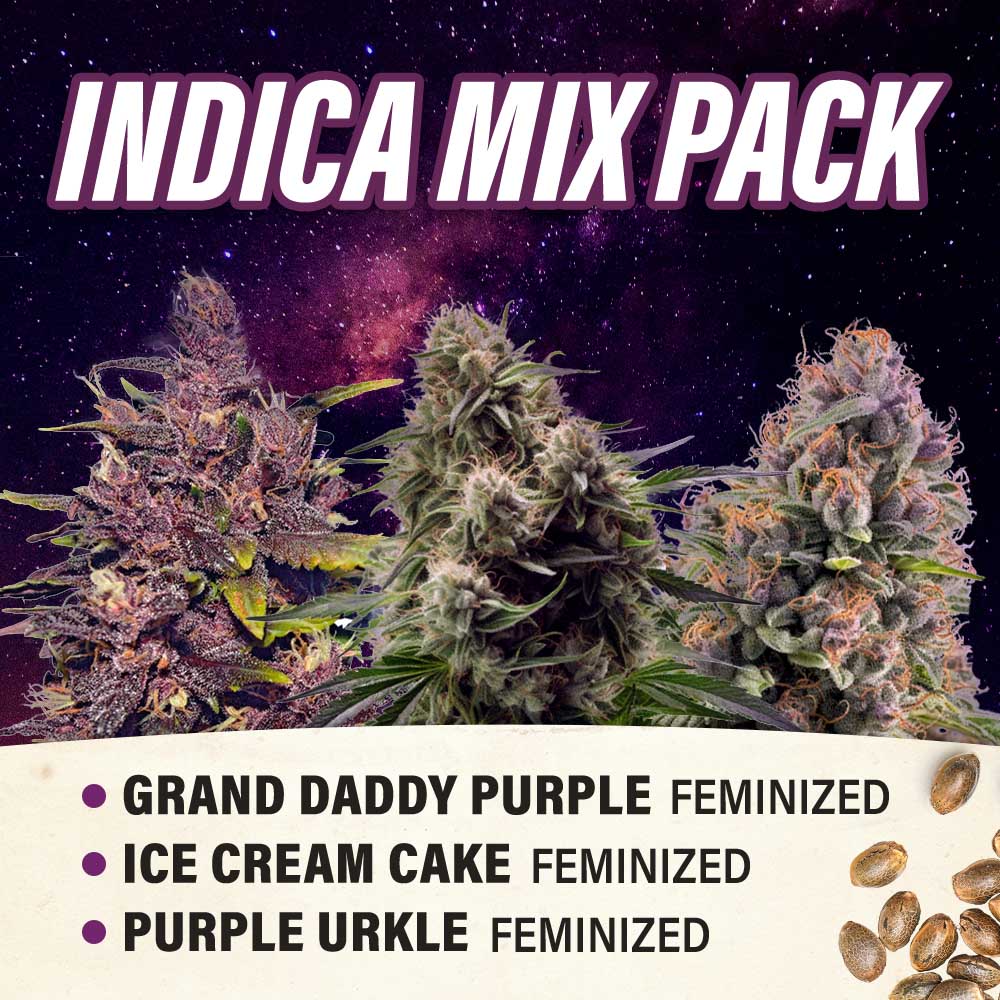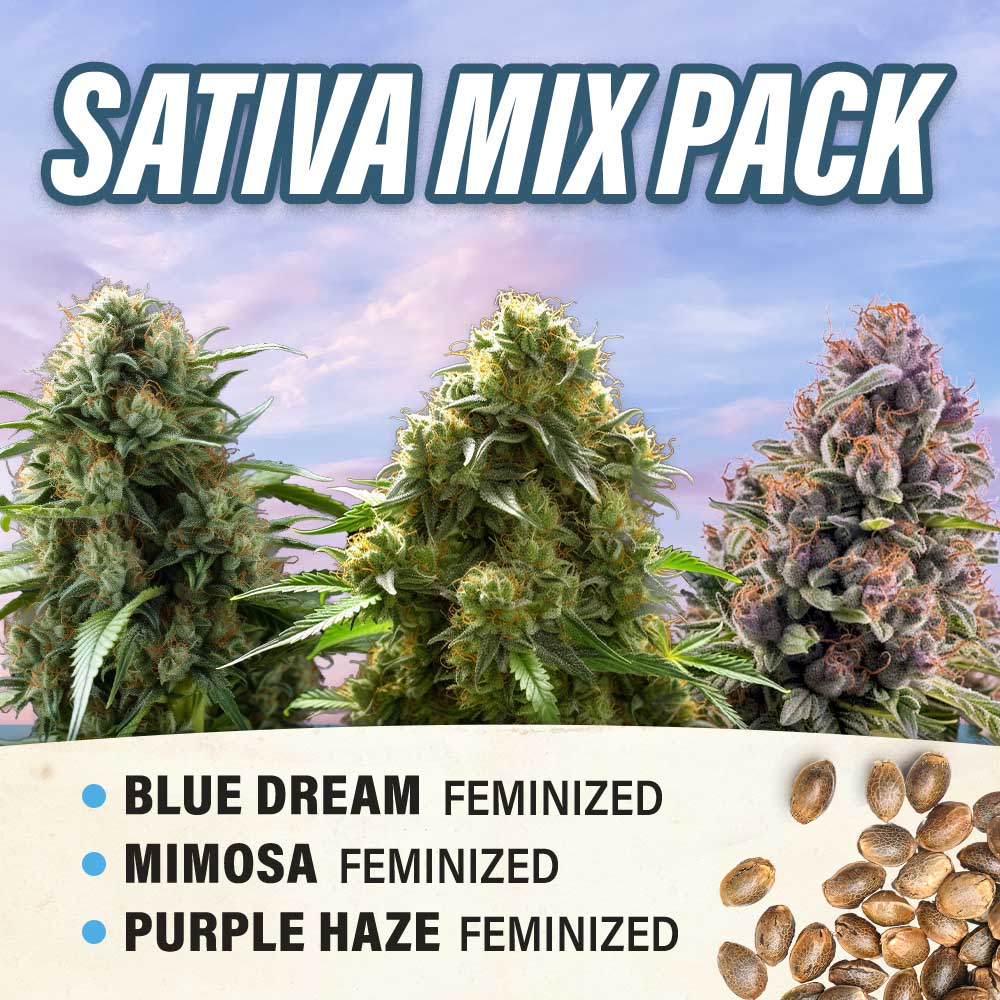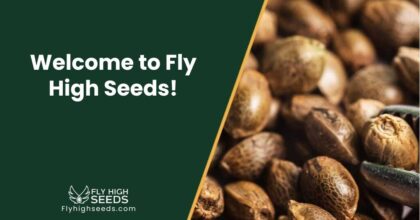
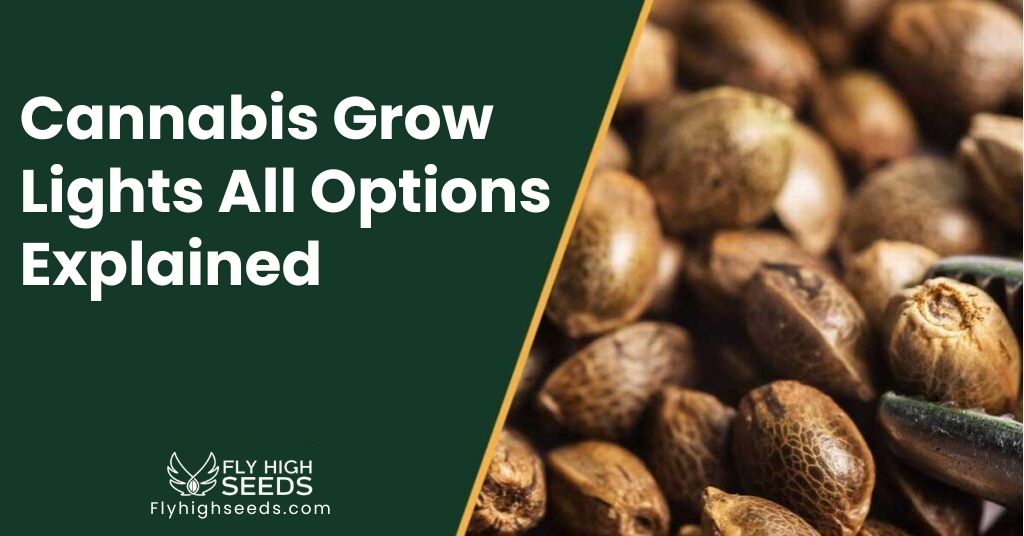
Cannabis Grow Lights – All Options Explained
Welcome to the world of cannabis grow lights! If you’re looking to nurture your cannabis plants indoors, you’ve come to the right place. In this guide, we’ll be your light beacon, illuminating all the options you have when it comes to choosing the perfect grow lights for your green companions. Whether you’re a seasoned cultivator or just starting out, we’ll shed light on the different types of grow lights available, explaining everything in simple terms. By the end, you’ll have a clear understanding of the various options, helping you make an informed decision to create a thriving indoor cannabis garden. Let’s embark on this enlightening journey together!
Table of Contents
How Do Cannabis Grow Lights And Regular Lights Differ?
Cannabis grow lights and regular lights differ primarily in their spectral output and intensity, designed specifically to cater to the unique needs of plant growth. Regular lights, such as incandescent or fluorescent bulbs used for general illumination, emit a broad spectrum of light suitable for human vision but lack the necessary intensity and specific wavelengths required for robust plant growth.
On the other hand, cannabis grow lights are engineered to provide the ideal spectrum of light for photosynthesis, which is essential for healthy plant development. They emit higher levels of blue and red wavelengths, crucial for vegetative growth and flowering stages, respectively. Additionally, grow lights are designed to deliver the intensity required to support vigorous growth throughout a plant’s lifecycle.
What Are 3 The Different Categories Of Cannabis Lights?
The three different categories of cannabis lights are:
- High-Intensity Discharge (HID) Lights: HID lights include Metal Halide (MH) and High-Pressure Sodium (HPS) lights. MH lights emit a blue spectrum ideal for the vegetative stage, promoting leafy growth, while HPS lights emit a red and orange spectrum suitable for flowering, encouraging robust bud development. HID lights are known for their intensity and effectiveness, making them a popular choice among cannabis cultivators.
- Light Emitting Diode (LED) Lights: LED lights have gained popularity for their energy efficiency, customizable spectrum, and longevity. LED technology allows growers to fine-tune the light spectrum to cater to different growth stages. They produce less heat compared to HID lights, making temperature control more manageable. LED lights are available in a range of options, from full-spectrum to models designed specifically for vegetative or flowering phases.
- Fluorescent Lights: Fluorescent lights, including Compact Fluorescent Lights (CFL) and T5 grow lights, are often used for smaller setups or seedling stages. While they are not as intense as HID or LED lights, they provide sufficient light for early growth and are suitable for tight spaces. CFLs emit less heat and are commonly used for propagation, while T5 lights offer a broader spectrum and are favored for early vegetative growth.
Each category of cannabis lights has its own advantages and considerations, and the choice depends on factors such as budget, space, growth goals, and personal preferences.
The Pros & Cons Of Fluorescent Grow Lights
Pros of Fluorescent Grow Lights:
- Energy Efficiency: Fluorescent lights, especially CFLs (Compact Fluorescent Lights), are energy-efficient options that consume less electricity compared to some other types of grow lights.
- Low Heat Output: Fluorescent lights produce relatively low heat, reducing the risk of heat stress or burning the plants. This makes them suitable for seedlings, clones, and small grow spaces.
- Affordability: Fluorescent lights are generally more affordable upfront compared to high-end LED or HID lights, making them a budget-friendly choice for beginners.
- Spectrum Variety: T5 fluorescent lights come in a variety of color temperatures, allowing growers to choose the appropriate spectrum for different growth stages, from propagation to early vegetative growth.
- Compact Size: Fluorescent lights are compact and lightweight, making them easy to install and suitable for small grow spaces or areas with limited height.
Cons of Fluorescent Grow Lights:
- Lower Intensity: Fluorescent lights have lower light intensity compared to HID or LED lights, which might not be sufficient for promoting optimal flowering and high yields.
- Limited Coverage Area: Due to their lower intensity, fluorescent lights are more suitable for smaller grow spaces and may not effectively cover larger areas.
- Limited Flowering Performance: While suitable for seedlings and vegetative growth, fluorescent lights might not provide the intensity required for maximizing flower production and dense bud development during the flowering stage.
- Limited Penetration: Fluorescent lights have limited light penetration, which means they might not effectively reach lower parts of dense canopy growth.
- Replacement Frequency: CFLs have a relatively short lifespan compared to other types of grow lights, and they may need to be replaced more frequently, which can lead to higher long-term costs.
Fluorescent lights can be a valuable option for specific stages of cannabis cultivation, such as propagation and early vegetative growth. However, for growers aiming for larger yields and more intense light requirements during the flowering stage, other options like HID or LED lights might be more suitable.
HID Grow Lights (High Intensity Discharge)
HID Grow Lights, or High-Intensity Discharge Grow Lights, are special types of lights used to help plants grow indoors. They’re like super-powered light bulbs that provide a lot of light and are great for growing plants like fruits, vegetables, and flowers.
HID Grow Lights come in two main types: Metal Halide (MH) and High-Pressure Sodium (HPS). MH lights are good for the early stages of plant growth because they emit a bluish-white light that helps with leafy growth. HPS lights, on the other hand, give off an orange-red light that’s excellent for flowering and fruiting stages.
These lights are super bright and efficient, making them popular among indoor gardeners. However, they can get hot, so it’s crucial to keep them at a safe distance from your plants to prevent overheating.
The Pros & Cons Of Fluorescent Grow Lights
Pros of Fluorescent Grow Lights:
- Energy-Efficient: Fluorescent lights use less electricity than some other grow lights, which can save you money on energy bills.
- Cooler Temperature: They produce less heat, making it easier to control the temperature in your growing area.
- Good for Seedlings and Small Plants: Fluorescent lights are great for young plants and seedlings because they emit a gentle, cool light that won’t burn them.
- Affordable: These lights are often less expensive to buy than some other types of grow lights.
Cons of Fluorescent Grow Lights:
- Limited Growth Stages: They may not provide enough light for larger plants or those in the flowering and fruiting stages.
- Lower Light Intensity: Fluorescent lights are not as bright as some other options, so they may not be suitable for all types of plants.
- Shorter Lifespan: They tend to burn out more quickly compared to some other grow light options, so you may need to replace them more often.
- Bulky: Fluorescent fixtures can take up more space because you often need multiple tubes to cover a larger growing area.
In summary, fluorescent grow lights are energy-efficient and great for small plants and seedlings, but they may not provide enough light for larger or flowering plants, have a shorter lifespan, and can be bulky.
LED Grow Lights (Light-Emitting Diode)
LED Grow Lights are special lights used to help plants grow indoors. They use light-emitting diodes (LEDs) to produce the right kind of light for plants. LED grow lights are great because they’re energy-efficient, produce less heat, and can be customized to give plants the specific light they need for each growth stage. They’re a popular choice for indoor gardening because they last a long time, save electricity, and are easy to set up. In summary, LED grow lights are like plant-friendly light bulbs that make it easier to grow healthy plants indoors.
Cannabis LED Lighting Examples
Cannabis LED lighting examples are special types of LED lights designed specifically for growing cannabis plants indoors. These lights come in various styles, like panels or bulbs, and they provide the right kind of light for cannabis growth. LED lighting for cannabis is popular because it’s efficient, emits less heat, and can mimic natural sunlight. Some examples include full-spectrum LED panels, which cover all growth stages, or red-blue LED lights for specific stages like flowering. These lighting options help cannabis growers achieve better yields and quality while saving on energy costs. In short, cannabis LED lighting examples are specialized lights that help you grow healthy cannabis plants indoors with less heat and energy usage.
The Pros & Cons Of LED Grow Lights
Pros of LED Grow Lights:
- Energy-Efficient: LED grow lights use less electricity, which saves you money on energy bills.
- Cooler Temperature: They produce less heat, making it easier to control the temperature in your growing space.
- Customizable Spectrum: LEDs can be tailored to provide the specific light colors your plants need for each growth stage, promoting healthier growth.
- Long-Lasting: LED lights have a longer lifespan, so you won’t have to replace them as often.
- Compact and Space-Saving: They come in various shapes and sizes, making them versatile and suitable for small spaces.
Cons of LED Grow Lights:
- Higher Initial Cost: LED grow lights can be more expensive to purchase upfront compared to some other types of lights.
- Light Intensity: Some cheaper LED lights may not provide enough light intensity for larger or light-hungry plants.
- Complexity: Setting up LED grow lights with the right spectrum and intensity may require more knowledge and research.
In summary, LED grow lights are energy-efficient, long-lasting, and customizable for plant growth. However, they can be pricier initially and may require some expertise to optimize for your specific plants.
Light Spectrum
When it comes to growing cannabis plants, light is like their food. The light they need comes in different colors, like a rainbow. We call this the “light spectrum.”
Plants really love two main colors of light: blue and red. Blue light is like their morning coffee – it wakes them up and helps them grow strong and healthy. Red light is like their dinner – it helps them flower and make buds.
So, for a successful cannabis grow, you need to give your plants the right mix of blue and red light. This is usually done with special grow lights that have the right colors. Think of it as a balanced diet of light for your cannabis plants to make them happy and productive.
Wattage
The wattage of the grow light is an important consideration, as it determines how much power the light will consume and how much heat it will produce. A general rule of thumb is to have 50 watts of light per square foot of growing area.
Coverage Area
You should consider the size of your growing area and make sure the grow light can cover the entire area. You don’t want hotspots or areas where the light isn’t reaching.
Heat Output
Grow lights can produce a significant amount of heat, which can be problematic for cannabis plants. Look for grow lights with a built-in cooling system, such as fans or heat sinks, to dissipate the heat.
Durability
The durability of the grow light is important, as it will be operating for long periods of time. Look for high-quality materials and a reliable brand.
Cost
The cost of the grow light is an important consideration, as it will impact your overall budget. However, you should prioritize quality and functionality over cost.
Brand Reputation
Consider the brand’s reputation in the market. Look for customer reviews and feedback to ensure you are investing in a quality product.
Related Posts

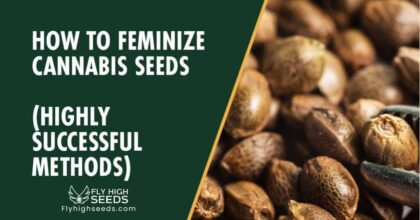
How To Feminize Cannabis Seeds (Highly Successful Methods)

How to Decarb Cannabis [Step-by-Step Guide]
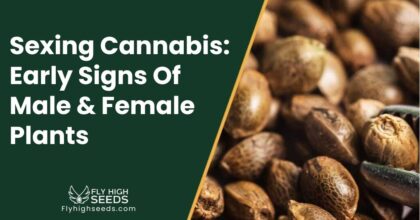
Sexing Cannabis: Early Signs Of Male & Female Plants
CATEGORIES
Best Selling Seeds

